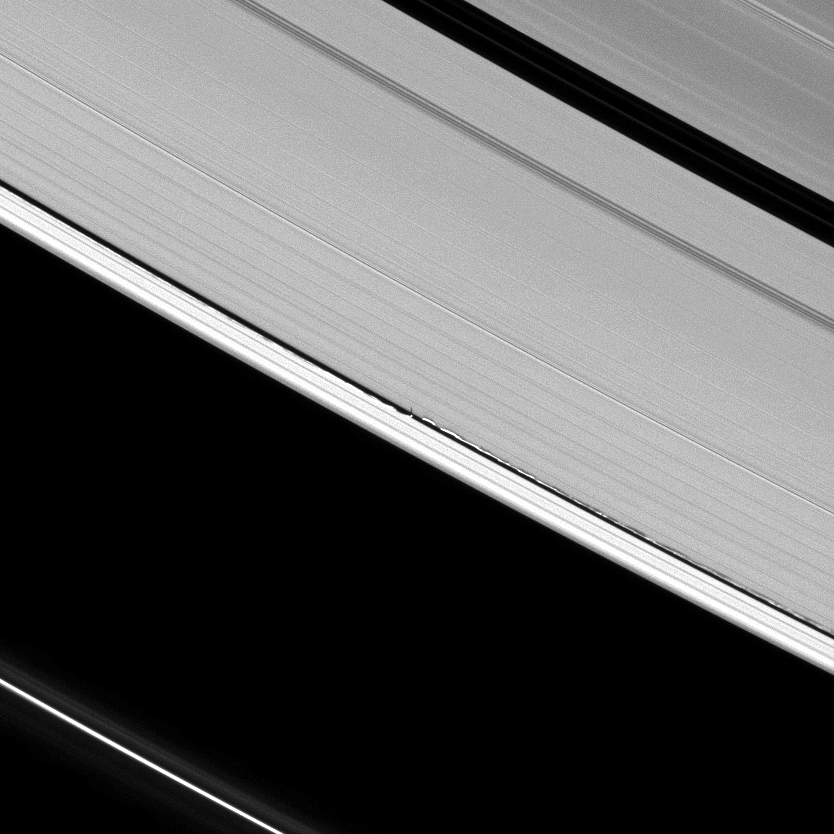Wavy Shadows

| PIA Number | PIA11656 |
|---|---|
| Language |
|
Never-before-seen tall vertical structures created by Saturn's moon Daphnis rise above the planet's otherwise flat, thin disk of rings to cast long shadows in this Cassini image.
Daphnis, 8 kilometers (5 miles) across, occupies an inclined orbit within the 42-kilometer (26-mile) wide Keeler Gap in Saturn's outer A ring. Recent analyses by imaging scientists published in the Astronomical Journal illustrate how the moon's gravitational pull perturbs the orbits of the particles forming the gap's edge and sculpts the edge into waves having both vertical and horizontal components.
Measurements of the shadows in this and other images indicate that the vertical structures range between one-half to 1.5 kilometers tall (about one-third to one mile), making them as much as 150 times as high as the ring is thick. The main A, B and C rings are only about 10 meters (about 30 feet) thick. Daphnis itself can be seen casting a shadow onto the nearby ring.
A second version of the image that has been magnified to six times its original size and cropped is also shown here.
This image of shadows on the rings and others like it (see Tiny Moon, Looming Shadows and Wave Shadows in Motion) are only possible around the time of Saturn's equinox which occurs every half-Saturn-year, equivalent to about 15 Earth years. The illumination geometry that accompanies equinox lowers the sun's angle to the ringplane and causes out-of-plane structures to cast long shadows across the rings.
This view looks toward the unilluminated side of the rings from about 49 degrees above the ringplane. The image was taken in visible light with the Cassini spacecraft narrow-angle camera on April 13, 2009. The view was obtained at a distance of approximately 1.2 million kilometers (746,000 miles) from Daphnis and at a Sun-Daphnis-spacecraft, or phase, angle of 56 degrees. Image scale is 7 kilometers (5 miles) per pixel.
The Cassini-Huygens mission is a cooperative project of NASA, the European Space Agency and the Italian Space Agency. The Jet Propulsion Laboratory, a division of the California Institute of Technology in Pasadena, manages the mission for NASA's Science Mission Directorate, Washington, D.C. The Cassini orbiter and its two onboard cameras were designed, developed and assembled at JPL. The imaging operations center is based at the Space Science Institute in Boulder, Colo.
For more information about the Cassini-Huygens mission visit http://saturn.jpl.nasa.gov . The Cassini imaging team homepage is at http://ciclops.org .
Credit: NASA/JPL/Space Science Institute
